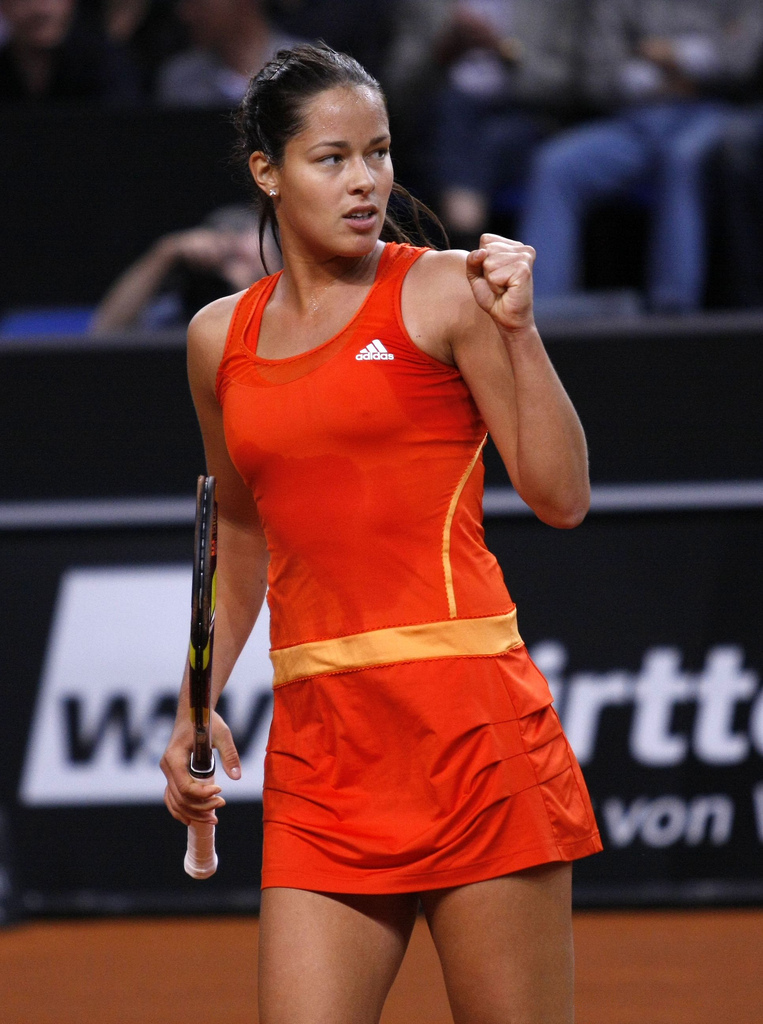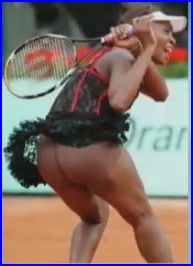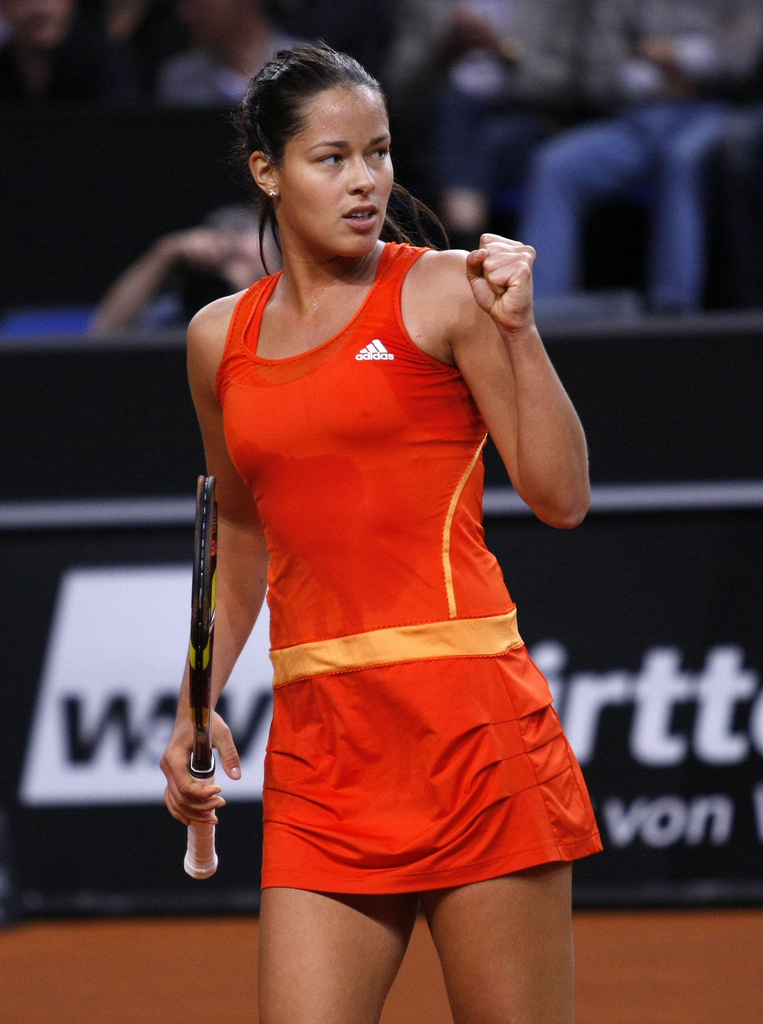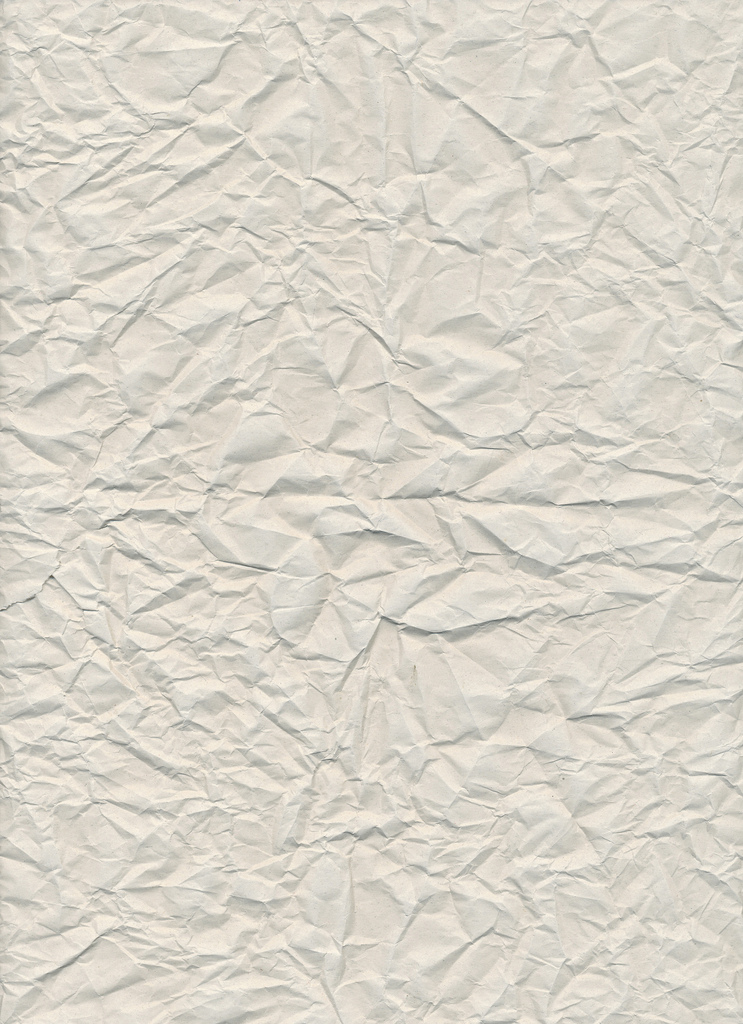The spectacle of boring baseline attrition served up by many modern players is just a load of Bollettieri.
Until Federer’s Swede-mashing experience at the hands of Robin Soderling, the biggest talking point at this year’s French Open had been Venus Williams’s “barely there” underwear. The number two seed in the women’s draw (or should that be drawers?) launched her campaign in a provocative combination of flesh-coloured knickers and a saucy black lace number with red straps.
It all looked more appropriate for a romp in the boudoir than a canter round the courts of Roland Garros. Libidinous journalists had a field day. Sadly, Russia’s Nadia Petrova ended the (lingerie) party with an efficient 6-4, 6-3 demolition of Venus in the fourth round, before losing to fellow Russian Elena Dementieva in the quarters.
How ironic that Venus’s undergarments should briefly divert attention from the fact that so much of modern women’s tennis is, quite frankly, pants. To put it even more bluntly, the spectacle of boring baseline attrition served up by many modern players is just a load of Bollettieri. World-renowned coach Nick Bollettieri has worked with many of the greats, including Boris Becker, Monica Seles, Andre Agassi and the Williams sisters. But for me, his name now conjures up images of statuesque blondes like Nicole Vaidisova (now retired) swatting balls aimlessly down the middle of the court and waiting for the next mega-bucks endorsement to roll in.
Don’t get me wrong — the Williams sisters and their uncanny ability to make winning into a fashion statement have been a very good thing for the game over the past decade. With 19 Grand Slam singles titles between them, they’ve made Wimbledon their own and seen off most of their major rivals. But they’ve set the bar so high that the rest of the tour often looks about as convincing as one of Dementieva’s serves.
The success of Robin Soderling, Tomas Berdych and Jurgen Melzer at Roland Garros this year shows there is still genuine depth in men’s tennis. They won’t beat Nadal and Federer every day, but they have the weapons – and the desire — to cause an upset. By contrast, a women’s final between Italy’s Francesca Schiavone and Aussie Samantha Stosur once again highlights the fragility of the women’s game. Look no further than the semi-finals: Dementieva retired hurt after losing the first set to Schiavone, while Jankovic looked totally out of her depth as she was thrashed 6-1, 6-2 by a super-charged Stosur.
Let’s hope that Saturday’s final is a more competitive affair than last year’s all-Russian face-off between Svetlana Kuznetsova and Dinara Safina, who was then ranked number one in the world. Safina’s mental fragility saw her go down 6-4, 6-2, showing that she was yet another top-ranked lady who didn’t really merit that status. Cruelly, for the marketing men, these were not even two of the more photogenic exponents of the women’s game. Girls, if we’re going to be subjected to boring and uncompetitive tennis can’t you at least serve up Ana Ivanović or Maria Sharapova?
Forget rankings, endorsements and ear-splitting shrieks: professional sport needs superstars who can deliver where it really matters — on the court. The tennis-paying public want competitive matches and, above all, compelling rivalries between players with contrasting styles. For an all-too-brief spell in the 80s it was Borg vs McEnroe, now it’s the prospect of those Roger vs Rafa match-ups that keeps me watching. As the French would say, “Vive la difference!”
That’s the problem with Venus and Serena: they’re not different enough. Having two sisters at the top of the game for more than a decade has been extraordinary, unprecedented and yet somehow anticlimactic. In their four Wimbledon final clashes to date, commentators often remarked on how the spectators seemed unsure about who to root for. The camera would cut frequently to the inscrutable face of their ever-present mother, Oracene. If she had a favourite, you certainly weren’t going to guess which one it was.
But last year, just when all seemed lost for women’s tennis the cavalry – or rather the Belgians – arrived. Am I the only one who thought that Kim Clijsters and Justine Henin were a bit hasty when they retired within a year of each other – Kim in May 2007 and Justine just 12 months later? A future dominated entirely by Eastern European moppets with limited volleying skills seemed inevitable. The Williams sisters looked forward to a few more years of dominating the Slams and doing pretty much what they liked in between.
Kim Clijsters changed all that by returning to the game last summer and, in only her third tournament back, carrying off the US Open title. Playing as a wildcard in the event she’d previously won in 2005, Clijsters beat Venus in the fourth round and then watched as Serena suffered a meltdown in their semi-final encounter. Serena’s tirade against a line-judge who had foot-faulted her led to a penalty point and – bizarrely — the end of the match.
There were ugly headlines for the younger Williams, a fine, the threat of suspension and much pontificating from people who really should know better. For the Belgian, who went on to beat Caroline Wozniacki in the final, it was simply a dream comeback. More important, this was a story that showed the women’s game could be about more than just window-dressing.
Whether Clijsters and Henin can break up the annual Williams garden party at Wimbledon remains to be seen. I just hope the leading ladies light up the courts of SW19 with their tennis prowess and not their outlandish wardrobe choices.
(Article first published as Is Women’s Tennis Just Pants? on Blogcritics.)













3 Pingbacks